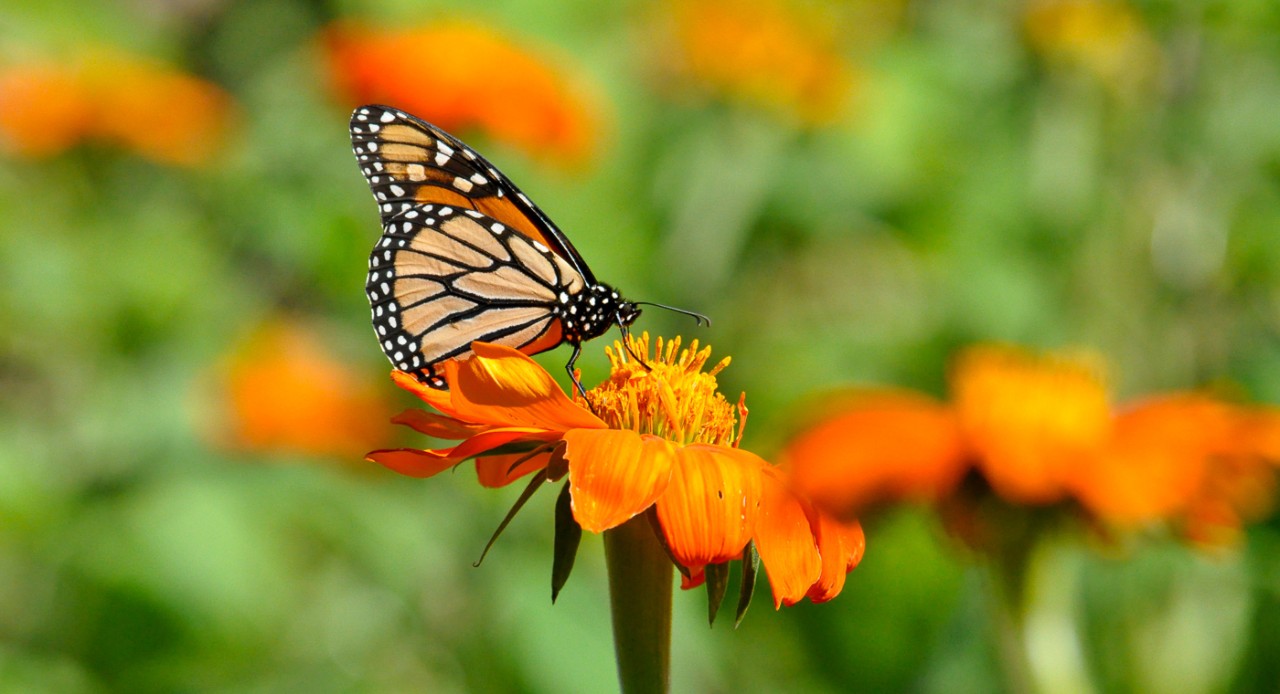
WVXU: Monarchs land on international endangered list
UC biologist Patrick Guerra explains how we can help monarchs survive epic migration
WVXU's Cincinnati Edition turned to a University of Cincinnati biologist to explain why monarch butterflies are in decline and what we can do to help.
The International Union for the Conservation of Nature last month placed monarch butterflies on its "red list" of endangered species, a warning that the species is in decline and at risk of extinction.
UC College of Arts and Sciences assistant professor Patrick Guerra told WVXU that the question of whether the species is in danger of extinction is complicated by the fact that they engage in a multi-generational migration. That makes a census somewhat trickier, he said.
"It really is a question of when you are looking at the population because there are different generations making this journey and what's the metric you use?" he said.

UC biologist Patrick Guerra works with monarch butterflies. Photo/Lisa Ventre/UC
Guerra was joined in the interview with Lily Maynard, the director of global conservation at the Cincinnati Zoo & Botanical Garden.
Guerra said monarchs are important pollinators for various species of flowering plant. But more than that, we can learn a lot from their incredible navigational abilities, he said.
A study this year by Guerra found that nighttime light pollution can interfere with their uncanny navigational abilities. Guerra found that butterflies roosting at night near artificial illumination such as a porch light can become disoriented the next day because the light interferes with their circadian rhythms. Artificial light can impede the molecular processes responsible for the butterfly’s remarkable navigational ability and trigger the butterfly to take wing when it should be resting.
The U.S. Fish and Wildlife Service in 2020 said the monarch butterfly warranted protection under the federal Endangered Species Act, but was precluded because of other species that had higher protection priorities.
"The IUCN red listing is a call to action," Guerra told Cincinnati Edition host Lucy May. "I think they will be placed on the Endangered Species List."
Guerra said people who want to help monarchs can plant milkweed around their homes and gardens and turn off outdoor lights where possible.

UC assistant professor Patrick Guerra and his students work with monarch butterflies at the Cincinnati Zoo & Botanical Garden. Photo/Lisa Ventre/UC
Related Stories
Removing Barriers to Higher Education
January 8, 2026
Cincinnati media covered the rollout of the Bearcat Affordability Grant which provdes a pathway to tuition-free college for students of famlies who make less than $75,000 per year and are residents of the state of Ohio.
The biggest skin-care trends of 2026 go back to basics
January 8, 2026
The University of Cincinnati's Kelly Dobos was featured in an Allure article discussing the biggest skin-care trends of 2026.
World class: Alumni travel program connects Bearcats on global scale
January 7, 2026
Most people have a natural curiosity to see the world. Meanwhile, most Bearcats enjoy being around other Bearcats. Alumni can check both boxes through the UC Alumni Association’s travel program, which offers about half a dozen excursions each year to fascinating places around the globe.
